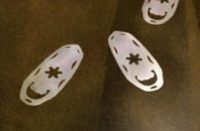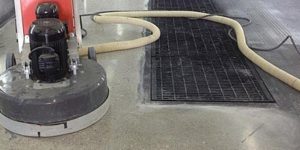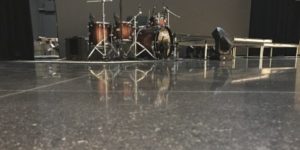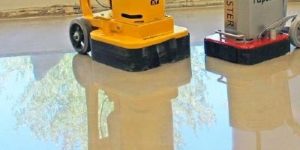Tip One: Heavy removal jobs can often be problematic. Slowing your variable-speed grinder can help you finish faster — and with better results.
This is very similar to the story told in the old children’s tale, “The Tortoise and the Hare.” If you remember, the slow-footed tortoise won a race against the faster hare by keeping a slow, steady pace while his faster counterpart sprinted, tired and lost concentration.
In this case, if you have a variable-speed grinder, use the lower revolutions-per-minute (rpm) settings during removal of heavy applications. This will hold true for any type of machine — rotary, planetary, etc.
Slowing the rpm gives the tools more time over the target. During heavy removal work, tools will sometimes lift and skip over the surface, reducing efficiency. That problem is multiplied if the machine is moving too fast. If you run the machine at a higher speed setting and quicken the pace of the operator behind the unit, the result will often be uneven performance that leads to much more work and less satisfaction. That’s why slowing the speed down during the removal of heavy applications can be a wise maneuver. In addition, this is also a good time to slow the operator’s pace (the speed of walking behind the grinder).
The opposite holds true for a thin-mil removal situation. In that case, increasing the rpm of the tool will get the maximum cut out of each revolution. This will require the operator to move at a swifter pace as well. If a slow pace is continued, wasted time and effort can result in removal of sound concrete.
Tip Two: Densify soft concrete.
If you are grinding and you notice a lot of sand particles and machine-produced debris, you most likely are grinding on a soft concrete slab. Soft concrete, often found in the South and warm-weather locations, often requires densifier before the grind.
Soft concrete can wear away valuable diamond tooling and also be very hard on vacuum hoses and filters. Best practices include using a cheap, low-solids sodium densifier until the floor rejects the liquid. This will help to stabilize the floor and make it dense. The result will be positive results for the tooling. This will also help eliminate machine marks or “swells” in the floor.
This process will not negatively impact the end results of the floor and will not inhibit penetration of stains or dyes. This process will also improve the mechanical bond for the installation of epoxy or urethane coatings.
So remember: In soft concrete situations, densify until the floor rejects the liquid, then grind. You’ll see much better results and much less machine, tool and filter wear.
Tip Three: Keep tools cooler by using handy lubricants.
When using scraper tools on a grinder or carbide tools on a scarifier, spray WD-40 or another mild lubricant on the tool tips. This process will help the tool stay cool, and it will reduce the amount of material buildup on the tools.
This process works well in protecting the undercarriage of the grinder box on the scarifier. It will also help prevent slurry from sticking to the undercarriage of a grinder during a heavy wet cut. Do not worry about the oil transferring into the floor, because the viscosity is not heavy enough to stain.
You can also spray the blades when using a tile removal machine, to extend the life of the spring steel. This works very well when using a carpet removal blade.
Tip Four: Avoid the use of sweeping compound.
It is very important to not use sweeping compound when cleaning a floor for polishing or coating. Sweeping compound contains a heavy oil infused with the solid product. That is the reason it works so well in general construction cleanup. The dirt and dust are encapsulated in the oil and the solids stay dry, allowing for easy pickup.
However, the oil can get caught in control joints, construction joints and the like, and the grinder and vacuum may draw the oil and solids out of the joints and grind them into the substrate. This could cause issues later in the process.
Instead of sweeping compound, I recommend using a foam squeegee. Gather the surface dust in one area of the floor. At that point it can be shoveled into a garbage can or bag. It is not necessary to clean the pile up with a vacuum, because you would just add stress to the filters.
After the floor has been squeegeed, use the vacuum for a final cleanup.
One final note: Try to use a foam squeegee whenever you sweep the floor. A bristle broom will actually fling particulate in the air if not used carefully.
Questions from Readers
Question:
What RPM is recommended to grind thinset off of a concrete subfloor, specifically for a 7-inch Milwaukee grinder?
Answer from Concrete Decor:
With a 7-inch grinder we suggest finding the RPM that does the job. Your 7-inch cup wheel may have recommendations on the packaging. If you can identify the manufacturer of the cup wheel, its website may also have recommendations for use.















